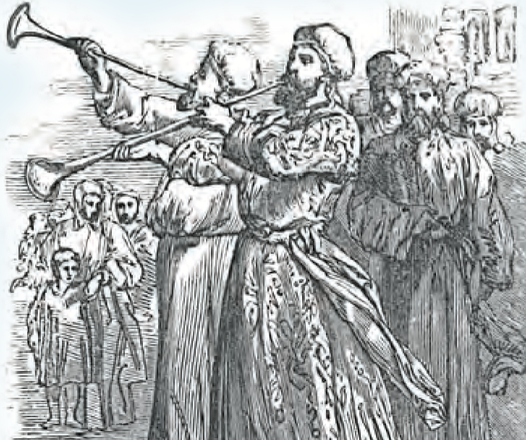
PROSPECT HEIGHTS — A Holy Year, or jubilee, is a “great religious event” in the Catholic tradition, according to the Vatican. The Holy See describes it as one of “forgiveness of sins and also punishment due to sin … reconciliation between adversaries, of conversion and receiving the Sacrament of Reconciliation, and consequently of solidarity, hope, justice, commitment to serve God with joy and in peace with our brothers and sisters.”
But above all, it is “the year of Christ, who brings life and grace to humanity,” according to the Holy See.
The concept of a jubilee originates from the Bible — specifically, the book of Leviticus 25, 10-14. In that passage, the Law of Moses prescribed a special year for the Jewish people. As it describes, the biblical jubilee, or the one of Hebrew tradition, is focused on freeing slaves.
“You shall hallow the 50th year and proclaim the liberty throughout the land to all its inhabitants; it shall
be a jubilee for you when each of you shall return to his property, and each of you shall return to his family,” the passage states. “This fiftieth year is to be a jubilee year for you: you will not sow, you will not harvest the un-gathered corn, you will not gather the untrimmed vine. “The jubilee is to be a holy thing to you; you will eat what comes from the fields.”
The Christian interpretation, however, is focused on liberation from sins. The first ordinary jubilee, as celebrated by Christians, was promulgated under the reign of Pope Boniface VIII in 1300. He proclaimed that for that year, and each 100th year to come, there would be a pardon of all sins and plenary indulgences to pilgrims who visited the Church of St. Peter and that of St. Paul.
People living in Rome had to visit the churches once a day for 30 days, and pilgrims coming from elsewhere for 15 days. After the first ordinary jubilee, requests poured in, asking that the next one be held before 1400. Ultimately, in 1343, Pope Clement VI gave his consent, set a new period of 50 years between ordinary jubilees, and scheduled the next for 1350.
The 50-year promulgation only lasted for two cycles. After jubilees in 1400 and 1450, Pope Paul II decided in 1470 that every Christian should be able to celebrate at least one ordinary jubilee in a lifetime and changed the period to 25 years beginning with 1475.
Next year will mark the 27th ordinary jubilee, which occurs after the set period of 25 years. Extraordinary jubilees, which are proclaimed by the pope for an outstanding event, can also take place, with the last one occurring in 2015.
Every jubilee, according to Notre Dame Professor of American Studies and History Kathleen Sprows Cummings, is “ever ancient, ever new,” meaning certain aspects of the celebration are a part of the tradition and other aspects are unique to the times.
For example, in 1500, the rites of opening and closing the Holy Door — a ceremonial entrance to the four papal basilicas in Rome that is only opened during a jubilee year — and the promulgation of a papal bull the year before the jubilee are things that traditionally take place. There’s also usually a significant canonization scheduled.
For the ordinary jubilee of 2025, Blessed Carlo Acutis is expected to be canonized. Conversely, some unique aspects of ordinary jubilees often relate to the times. Cummings noted that the ordinary jubilee of 1950, which followed the end of World War II and occurred during the Cold War, included many prayers for peace.
Also, she noted that 1950 was significant because there was passenger air travel for the first time, so many, Americans in particular, “felt themselves to be a big part of the jubilee for the first time.”
The ordinary jubilee of 2000 was also a unique celebration, as it was the first Holy Year that also marked the turn of a millennium since the first jubilee in 1300. It was also considered significant because it was the 2000th anniversary of the birth of Christ. Regardless of the date, Cummings emphasized the significance of a Holy Year.
“It’s a chance for people to come to Rome to be renewed in their personal faith,” Cummings said, “but also for the Church to act corporally to renew the Church in the world.”
